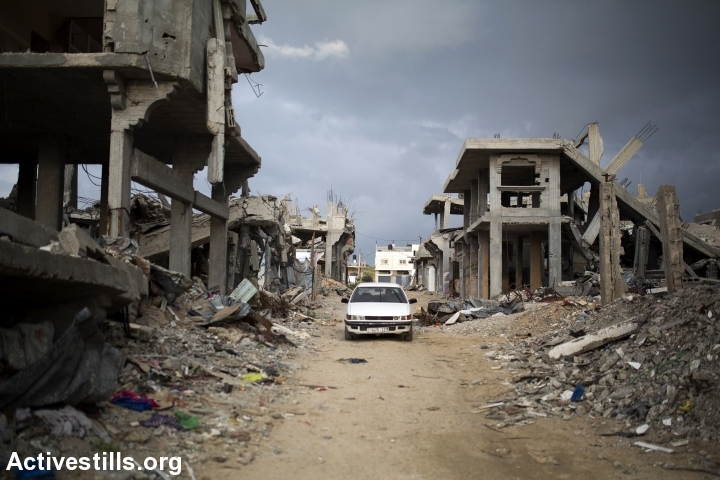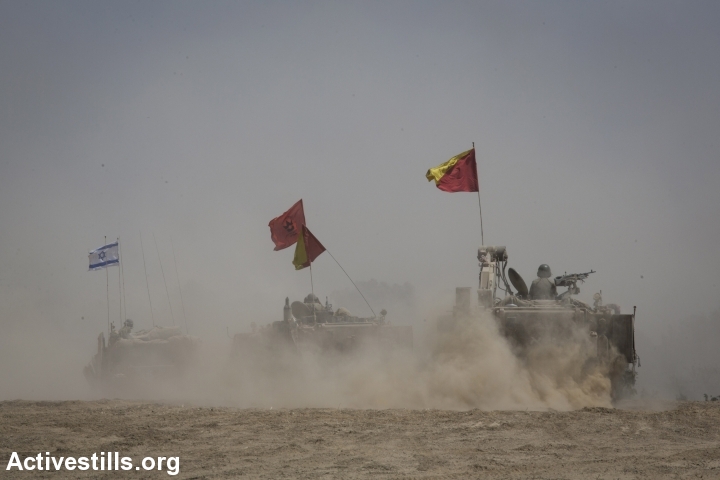Both Israel and Hamas are preparing for the next round of fighting. So how does one prevent the inevitable?

Hamas is preparing for the next round of fighting. That has been the messaging the Israeli security establishment has dispatched throughout the media in recent days, part of widespread coverage marking one year since the start of last summer’s war in Gaza.
“Since the end of Operation Protective Edge Hamas is rebuilding its terror infrastructure and its capabilities, which were severely damaged during the operation,” Deputy Gaza Division Commander Col. Nochi Mandel told Israel Radio on Tuesday. “The organization is building up its forces with [training] exercises, the manufacture of rockets and mortars, and tunneling,” he added.
“It’s not just the IDF that is preparing for the next round,” Walla! News posited in its version of the same story that appeared in nearly every Israeli news outlet on Tuesday. The nameless “senior officer in the Southern Command” added that in that next round of fighting, Hamas’s armed wing plans to have entire companies of combatants infiltrate into Israel.
Despite the tens of thousands of explosive munitions dropped and shot into Gaza, Hamas, it appears, has not decided to unilaterally declare peace.
The IDF, too, is preparing for the next round of fighting. It is procuring new munitions and guns, jets and drones, developing anti-missile and rocket technologies, and collecting intelligence against Hamas. That, after all, is what adversaries do.

In fact, as long as there is no peace, as long as the occupation and the siege and the oppression of Palestinians continues, Israel will find itself engaged in armed conflict with various Palestinian groups who view violence as the only path to liberation. The same goes for Israeli generals and politicians who believe the occupation and the siege and oppression and occasional violent escalations are the only way to keep Israel safe from said Palestinians.
It’s actually even simpler than that. As long as there is no peace and dignity and equality, there will be violence. And unfortunately, there will most likely still be some violence once peace and dignity and equality reign, regardless of the number of states or the routes of their borders.
The only absolute certainty is that as long as there is occupation, there will be conflict. And as long as there is conflict, there will be looming violence. And as long as there is violence, each side will constantly attempt to increase the ways it can deliver said violence upon its enemy.
That is not to justify any specific type of violence — it is all deplorable. And yes, some types of violence are more deplorable than others, but not by a whole lot. A dead child is a dead child regardless of whether he or she was targeted or not. A family left homeless is still a homeless family regardless of how “justified” blowing up their home seemed at the time, or how legal it was determined to be by military lawyers months and years later.
The unnamed senior officer in Walla!’s article made sure to emphasize that the year since Operation Protective Edge has been the quietest period in years. The next round of violence, however, is waiting around the corner, he added.
The same thing was said after each and every round of violence in the past six years. Between rounds of heavy violence, we are told, are periods of peace and quiet. Instead of suggesting that peace might prevent violence, we are told that violence creates peace.
There is little value in pointing out that last summer’s snowballed violence came directly on the heels of a dramatic blow-up in the peace process. There is certainly no sense in arguing that the 20-year-old failed peace process, which long ago stopped constituting a viable path for peacemaking, could have prevented the Gaza war and saved 2,200 lives. But that does not relieve anybody of the duty to seek a better future of marked by equality, dignity and yes, peace, for both Israelis and Palestinians.
There is only one lesson to be drawn from last summer’s war in Gaza, and it has nothing to do with who is still digging tunnels and who is acquiring which fighter jets or anti-rocket systems. The only lesson to draw from the previously unthinkable violence that destroyed so many thousands of lives last summer is that the absence of peace ensures more war.


